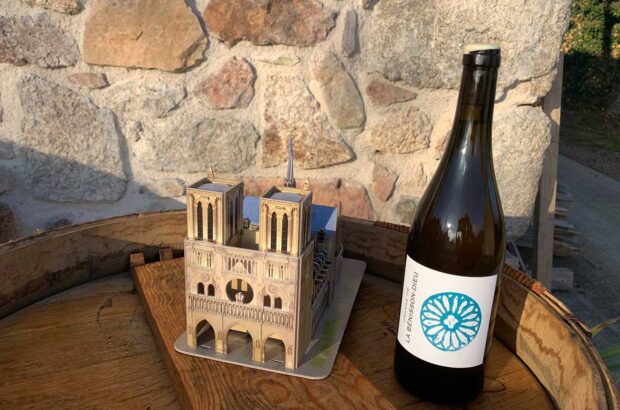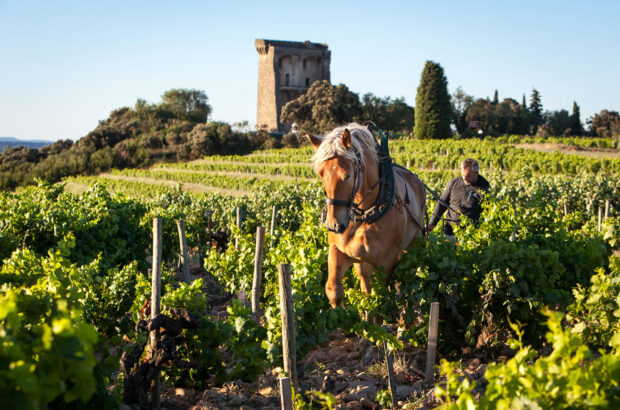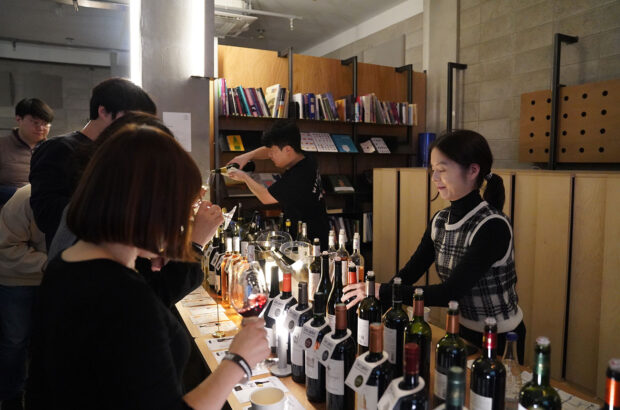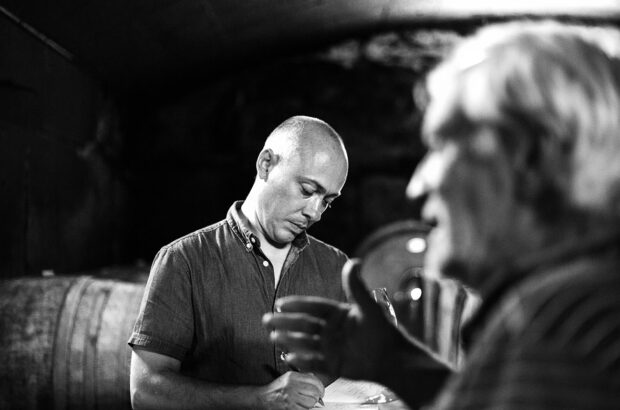It’s a hair-raising trip to get there, but the folk-singing, grape-stomping fun of the island’s fringe wine festival is well worth it, says LUCY SHAW
I’m holding onto my armrest for dear life. The pilot makes a violent turn, having to somehow land this hunk of metal on the tiny island we’re rapidly approaching. We get closer, and I can see flashing lights on the runway going crazy.
The landing strip is impossibly small and perched precariously close to the sea. Out of the window land has disappeared and I can see only water, which we are hurtling towards. A few inches either way and we’re swimming. A hush falls upon the cabin – even the locals are nervous. We hit the ground with a thud and the passengers erupt with applause.
It’s mid-September, and I’m in Madeira for a fringe wine festival at Quinta do Furão, one of 10 Quintas da Madeira – estate-house hotels dotted around the island. Driving up through the mountains to the quinta, the winding roads are almost as hair-raising as the plane journey, but the reward comes in the form of the superb views.
The landscape changes by the minute, from bright purple bougainvillea in Funchal, to deep mountain greens (Madeira is home to over 500 species of trees). The further up you get, the more Jurassic it becomes. I wish I could enjoy it more but nausea is curbing my enthusiasm.
I stop for some air on my way through the Laurisilva – the world’s largest surviving laurel forest dating back 10,000 years, and a UNESCO World Heritage Site – then continue the final stretch to the quinta in Santana, on the island’s north coast. Hundreds of guests are gathered in the hotel’s garden, waiting for the festival to start.
All focus is on the huge wine press. Pedro Costa, the quinta’s manager, gives a sign, a boy lets off an ear-splitting blast from a conch shell and a group of folk singers emerge. The women are in starched blouses, floral aprons and red headscarves, while the men, known as borracheiros, are in grey waistcoats, red neckerchiefs and brown bobble hats.
Traditionally borracheiros were workers who transported grape juice from remote parts of the island to wine lodges. They carried up to 70 litres of wine on their backs in borrachos (goatskin sacks). Today you only see them at harvest festivals. (Curiously, the Spanish adopted the word borracho to mean drunkard…) The folk group begins belting out songs while an old lady beats a wooden stick, known as a brinquinho, with fabric dolls and bells at the top. One of the borracheiros flings me into the troupe. Before I know it, I’m dancing along with them.
Marching orders
Attention soon diverts back to the wine press. The borracheiros grab baskets of Sercial grapes and fling them into the press. One then rolls up his trousers, kicks off his clogs and leaps in, urging us to join him. It’s chaos. Hoards of English and German tourists clamber to be first in, scrambling their way up the slippery wooden steps. Soon the press is heaving with bodies, marching soldier-like on the spot to the sound of the accordion.
I refrain at first, but am quickly persuaded to join in. The feeling of the cold, wet grapes underfoot is strangely satisfying, as is the squelching sound. Soon I’ve found my rhythm and am marching like a madman, but it’s hard work and after five minutes I’m exhausted.
A steady flow of juice emerges from an outlet on the side of the vat, destined for the Madeira Wine Company, where, you’ll be pleased to hear, it will be well filtered before bottling.
After my grape aerobics I’m treated to a traditional espetada (barbecue), refuelling on beef threaded on laurel skewers, paõ de Santana (sweet potato bread), milho frito (fried maze) and a glass of Poncha, a heady mixture of Aguardiente (like Cachaça), sugar cane, lemon and honey.
The traditional, better-known Festa do Vinho takes place in the first week of September (2-4 this year) in the village of Câmara de Lobos and the island’s capital, Funchal. The penultimate day of the festival begins with a grape picking ceremony, followed by a parade through the streets of Câmara de Lobos, ending with a grape-stomping session in front of a cheering crowd at the Praça do Mercado.
During the week-long festival, Funchal’s Avenida Arriaga comes alive with classical concerts, live bands, light shows, wine tastings, regional cuisine and folk dancing – troupes come from as far as Brazil and Venezuela to take part.
Along with parts of the island’s southern coast, Funchal was ravaged by February’s flash floods, which caused E1m worth of damage. but the capital has been cleaned up and it’s business as usual in the busy district. Old traditions die hard here, but the sleepy island seems to be waking up.
From forward-thinking winemaker Francisco Albuqurque at the Madeira Wine Company, to the sleek Vine Hotel with its open-air bar and rooftop restaurant (see right), the island has sexed-up its image – a move that will surely raise a wink of approval from its most famous expat, footballer and part-time Armani model Cristiano Ronaldo.
Written by Lucy Shaw






